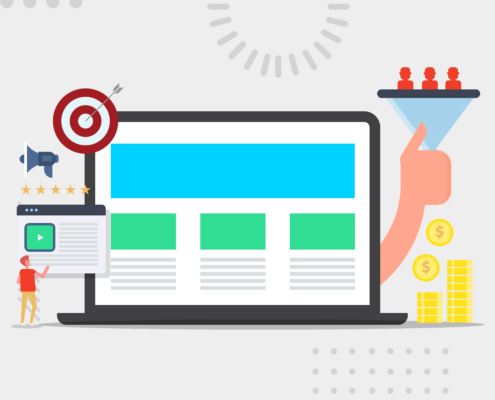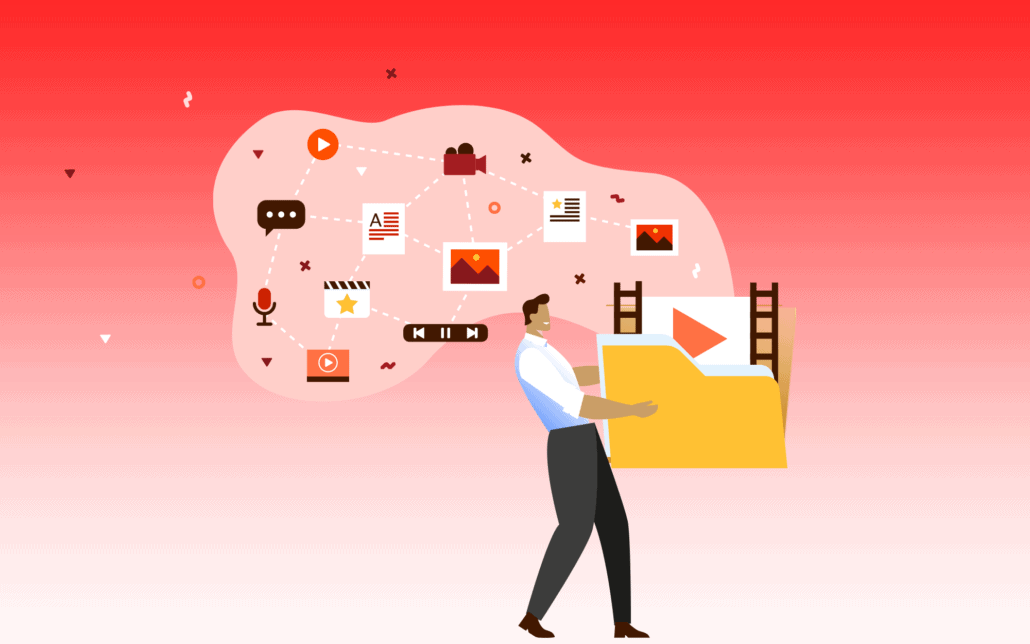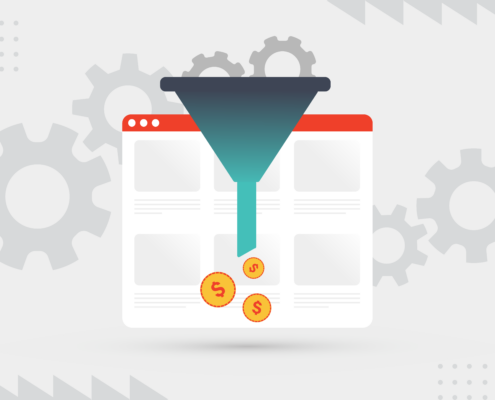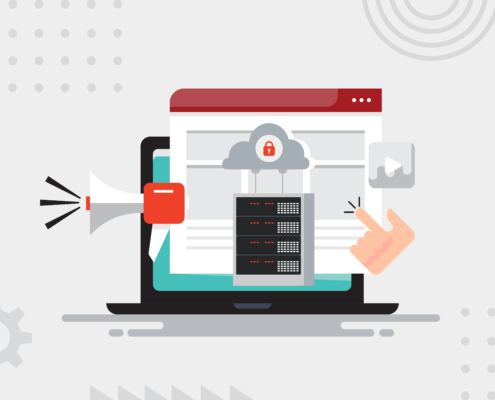

You might think that appointment setting and lead generation are the only ways to pique the interest of leads and effectively guide them to the end of the sales funnel. While these business growth solutions are necessary for building a sustainable sales pipeline, there are some additional assets that you can use to reduce the amount of time a prospect or lead spends in the sales pipeline—marketing collateral.
Marketing collateral, also known as sales collateral or sales enablement assets, provides significant benefits to growing businesses, but some companies seem to minimize its impact. This is often because they either see marketing collateral as an outdated asset to lead generation or think it’s too expensive (which isn’t always true).
Marketing collateral plays a crucial role in the B2B lead generation process—but what is it, and why is it important? Throughout this blog, we’ll cover the following topics:
What Is Marketing Collateral?
Marketing collateral is any form of digital or printed material used to communicate or promote a company’s messaging and product or service offerings. Many businesses today use marketing collateral to accelerate their appointment setting and digital marketing efforts.
Different Types of Marketing Collateral
Marketing collateral isn’t a single asset used for business growth efforts. It refers to a combination of different assets used to engage potential buyers in your target market and effectively guide them through the sales funnel.
Here are a few of the most common types of collateral used for lead generation:
Brochures
A brochure is a multi-page piece that is most often used to give a general overview of your business, such as the product or services you offer, your company’s mission and values, and contact information so they know where they can reach you.
Sell Sheets
A sell sheet is a one-page piece that spotlights one of your unique products or services. Many businesses also use it to bring attention to a new or existing product and the different pain points it can relieve.
Infographics
An infographic is the ideal marketing collateral to showcase statistics or facts and how they relate with the impact of your product, service, or industry. You can also use them to showcase processes that your company follows or position yourself as a thought leader by comparing industry myths and facts.
Case Studies
A case study is a one-page piece that tells a detailed story of how you helped one of your clients. It explains a common problem or pain point that your prospects encounter, what you did to solve that pain point, and the tangible results. It’s great for showing off your capabilities to potential clients and illustrating why you’re the best choice for solving their problems!
Promotional Videos
A promotional video uses moving graphics and a compelling script to engage prospects and leads, helping guide them through the sales funnel. While many people often think of promotional videos as commercials, that’s not their whole scope. A promotional video can be a variety of video types, like a how-to, a company profile, a “why us,” a client testimonial, and more.
All these different types of marketing materials can be used in every stage of the purchasing funnel, and certain assets can be used more effectively in some stages than others.
For an inside look into the best types of marketing collateral for each stage of the sales cycle, download our free guide here.
Why Do Businesses Need Marketing Collateral?
Many businesses choose to integrate marketing collateral into their business growth efforts because:
It Leverages the Power of Storytelling
While the way you’d explain what your business does may make perfect sense to you, it might not make as much sense to the average, everyday person. And that’s where marketing collateral comes in—telling your company’s story.
Storytelling is one of the most important, if not the most important benefit of collateral. Being able to tell your story in a creative and easily digestible way helps your business in so many ways, like:
- It prevents your message from getting diluted. The owner of a business could probably deliver a pitch in their sleep, but not everyone in the company has that same level of knowledge. Marketing collateral helps everyone within an organization tell the same great story.
- You can document your story so you never forget it. When a business is in its early stages, the owners should clearly define what the business offers, what they do, and why people need it. Marketing collateral can help keep the story documented so messaging remains consistent.
- Not everyone speaks your language, so marketing collateral helps them understand. Collateral helps anyone understand exactly what it is that you do. If you’re in a niche industry that uses a lot of jargon, marketing collateral can help you share your story through a lens that the average layperson can understand.
- Sales reps will feel less frustrated from explaining the same product and service offerings. Many sales development representatives (SDRs) can get frustrated because they can’t properly communicate a product or service offering to prospects. Marketing collateral solves this problem. When you have everything about your business clearly defined on paper, it makes the SDR’s job a lot easier.
A Single Asset Can Be Used in Various Sales Scenarios
If you need something standardized for multiple purposes, marketing collateral is your best bet. One asset can be used for dozens of different sales and marketing situations. For example, here are just some of the ways you can use brochures for outbound and inbound lead generation:
- Your sales team can use brochures to give an elevator pitch.
- You can send a brochure digitally in an email to a prospect to get a response.
- You can leave a physical copy of your brochure at a business or in someone’s mailbox.
- Prospects can use brochures as a reference point if they aren’t ready to buy right now.
- A current customer can send a brochure to another business if they want to refer you and the message won’t get diluted; it remains consistent every time
Whether you want to spice up your email marketing or help your sales reps perfect their pitch, marketing collateral can help you do it all.
It Can Align With the Flow of the Sales Conversation
Brochures, sell sheets, case studies, and various other types of marketing collateral are extremely useful in guiding a sales conversation. Here are some examples to consider:
“Tell me about your company.”
In this case, you can send them a brochure to learn more.
“Okay, now that I understand what you do, can you provide me with some more information about this specific product or service?”
If they ask this, you can send them a sell sheet that talks about a product or service in-depth and answer most (if not all) the questions they have.
“Who have you worked with in the past? Have you worked with companies similar to mine?”
Here, you can share or send them a case study or a video testimonial highlighting your impact on businesses similar to theirs.
Thinking fast and answering questions quickly is tough, even for the most experienced SDR. So if you have marketing collateral to send prospects that answer their questions, it will make you appear more professional and credible.
It Can Help You Close More Deals and Generate a Positive ROI
You may have the appointments secured, but you have to sell them. Marketing collateral can help you close more deals by guiding your sales team through the sales conversation and delivering your story in a way that makes sense.It encourages leads to progress down the sales cycle and convert into customers.
The graphic design experts at Abstrakt have a creative and sales-driven eye for building sales and marketing collateral that converts decision-makers into sales opportunities. Don’t believe us? Check out our sales and marketing collateral portfolio here.
Tips for Creating Marketing Collateral That Converts
Anyone with a computer, or even a pen and paper, can make their own marketing collateral, but that’s not enough to create assets that work to your advantage. If you want marketing collateral that boosts conversions, you have to:
Be Mindful of Your Brand Voice
Marketing collateral is often how prospects first learn about your company. To make your collateral stand out, make sure your writing and design aligns with your brand voice and remains consistent from one asset to the next.
Stay Authentic to Your Messaging
To get customers to engage with your content, you have to present it in the right way. Your writing voice needs to be authentic to your company; this allows consumers to absorb the information you present accurately. If your content is true to your brand, you’ll build trust and credibility.
Think Like Your Buyers
With every piece of marketing collateral you create, you have to put yourself in the buyer’s shoes. What’s in it for them, and how will your product or service solve their business problems? Why does this prospect need your product or service? Clearly communicating this in your collateral helps you schedule higher quality sales appointments and further pique the interest of prospects that are ready to buy.
Keep It Concise and Easy to Digest
When writing copy for marketing collateral, make sure your potential leads can scan over it in less than a few minutes so they can see what you’re trying to say and still be interested in learning more from your team.
Consider filling your collateral with statistics, awards, and accolades, or perhaps create a one-page success story about a client in a relevant industry. This content is quick, digestible content packed with meaningful information that shows you can work fast, and it also shows that you respect your prospect’s time. Here are a few tips:
- Use headers when they make the most sense
- Break up content with bulleted lists
- Use images and other eye-catching graphics
- Keep paragraphs to concise
Use a Variety of Marketing Collateral
Every prospect has different preferences when it comes to consuming content. Plus, content comes in all forms, so why not mix it up? By sending your leads various kinds of sales collateral depending on their stage of the sales cycle, you can keep prospects on their toes and continuously build top-of-mind awareness.
Hire an Outsourced Marketing Collateral Design Company
Many small to medium-sized businesses don’t have the bandwidth to create sales-focused marketing collateral that converts leads into closed business. When they don’t, they often look for help from marketing collateral design specialists outside of their company. Hiring creative design experts gives you access to a team of copywriters, editors, graphic designers, video producers, and more.
Need a hand creating and using marketing collateral to its full capacity? Contact the business growth experts at Abstrakt to learn how we can be your partner in marketing collateral design services.
FAQ About Our Marketing Collateral Design Services
Abstrakt Marketing Group offers a wide array of marketing collateral design services for small to medium-sized businesses that want to maximize their lead generation efforts. Here are some frequently asked questions from our prospects or clients going through their onboarding implementation period.
What does Abstrakt’s typical marketing collateral design process look like?
When you choose to partner with Abstrakt, you will be working directly with a Marketing Manager (MM). They will help you strategize what marketing collateral pieces make the most sense for your business and how you would like your delivery schedule to be set up. They will work with you one-on-one during your implementation month and give you an online survey to collect information on which services you feel are most important for production. They will also work with you to choose a design theme that best suits your branding.
Our custom marketing collateral package gives you the flexibility to choose which pieces you would like to receive first, or we also offer a standard Package that gives you a suggested delivery progression format to achieve the best results.
Does Abstrakt offer other marketing collateral design options?
Yes, we do! We offer alternative pieces of collateral, and you’re not limited to one type of collateral piece either. You are welcome to choose the same collateral piece more than once (e.g., two sell sheets). You can talk with your MM to develop a customized marketing collateral package where we can help you create any asset that will meet your needs!
How does Abstrakt make sure content and design stays consistent with branding guidelines?
During implementation, our MMs will collaborate with you to learn what you want the branding guidelines to look like for your business. To make sure what we create fits with your current branding, we offer themes for you to choose from. Our themes will always be in line with your brand colors, logos, fonts, and other visual components.
What are some ways that Abstrakt uses marketing collateral for lead generation?
We use your marketing collateral during different phases of the lead generation process to attract and nurture leads. Here’s how we typically use each piece of collateral:
- Brochures: When a lead doesn’t have time to talk during the introductory phase of B2B appointment setting, we send over your brochure so they can learn about your business on their own time. Brochures are also perfect when a lead doesn’t understand what you do or wants an in-depth explanation of your company.
- Sell sheets: Leads want to know what they’re buying, and sell sheets give a thorough, easily understandable explanation of your products and services. We send sell sheets when leads express interest in a particular offering.
- Case studies: B2B buyers want to know that you’re a trustworthy seller. When leads ask if you have any past success stories with similar businesses, we send case studies to build trust. Our inbound marketing team can also incorporate case studies into your website and social media pages to demonstrate your company’s value to potential customers.
- Infographics: If you only have a few seconds to make an impact on a potential customer, infographics are the perfect tool. When we just can’t seem to hook a lead, we try to capture their interest by sending eye-catching infographics with impactful statistics.
- Videos: It’s easy to learn about a product or service from a video. All your leads have to do is watch and listen for a few minutes. We can send your videos to leads throughout the lead nurturing process when they want to learn more about your company or products. Additionally, if you partner with us for website development, we can integrate your videos throughout your website to boost engagement.
Key Takeaways
While marketing collateral is often overlooked, it’s one of the most important ways to generate leads. Without high-quality marketing collateral, you limit the amount of impact you get from your business growth efforts. You also miss a large part of your target market that learns best by visualizing rather than listening.
Marketing collateral is incredibly effective for lead generation because it can be used for a variety of sales and marketing scenarios. With buyer-focused collateral, you can align messaging from one platform to another, increasing the opportunity for a potential buyer to trust your business and progress their journey down the sales funnel.
At Abstrakt Marketing Group, our marketing collateral design services give growing businesses the chance to promote their business through high-quality, sales-focused assets. We offer a wide range of sales collateral solutions with all the team members to execute them to your liking.
When you’re ready to maximize your business growth efforts through marketing collateral services, contact the experts at Abstrakt!




